5自由度、五自由度工业机械手设计【5轴机械手】【含CAD图纸、三维模型、说明书】
收藏
资源目录

压缩包内文档预览:
编号:50922291
类型:共享资源
大小:18.89MB
格式:ZIP
上传时间:2020-02-23
上传人:机****料
认证信息
个人认证
高**(实名认证)
河南
IP属地:河南
50
积分
- 关 键 词:
-
5轴机械手
含CAD图纸、三维模型、说明书
自由度
工业
机械手
设计
CAD
图纸
三维
模型
说明书
- 资源描述:
-


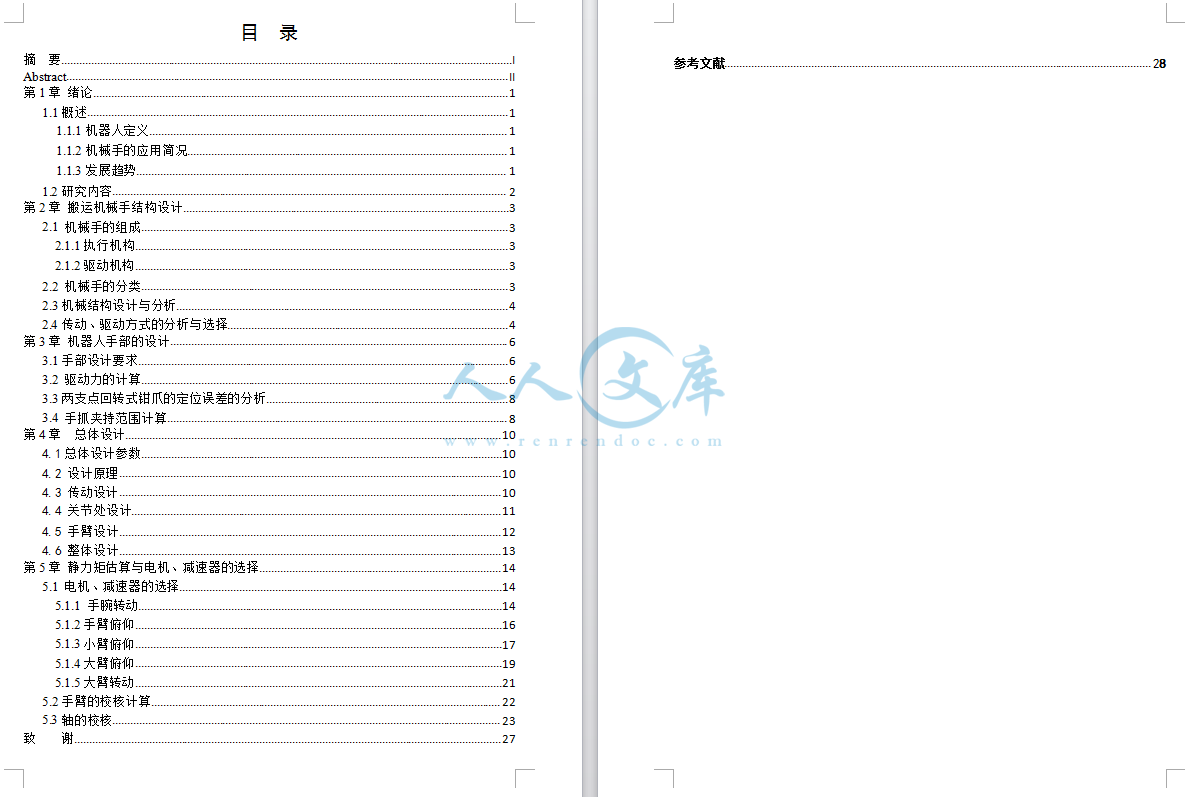
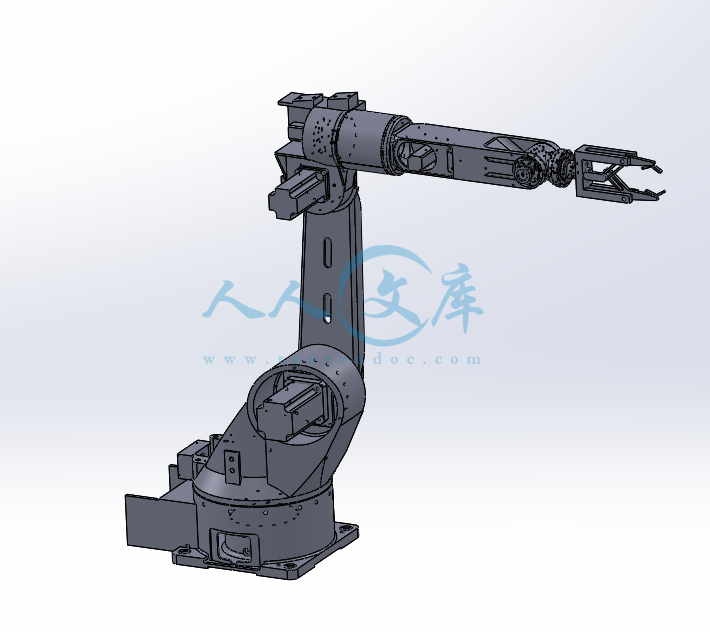
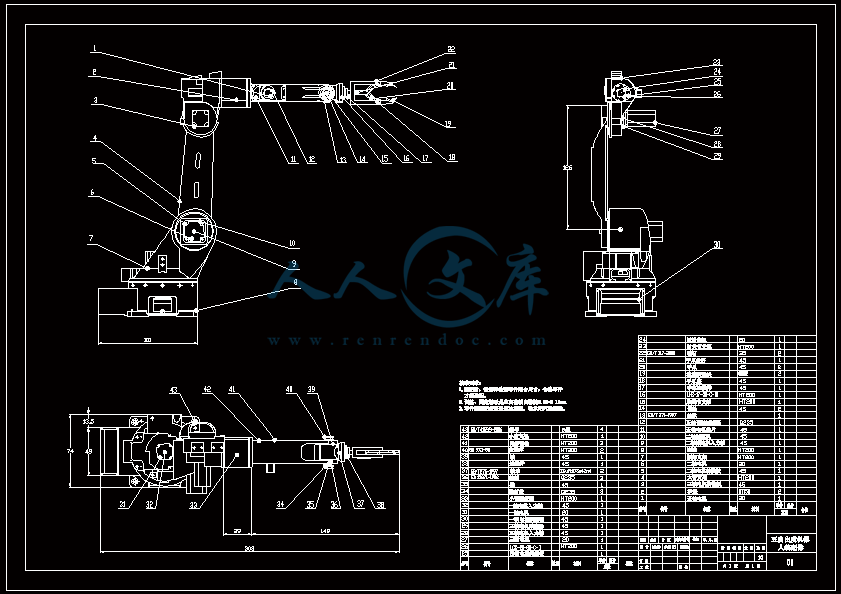
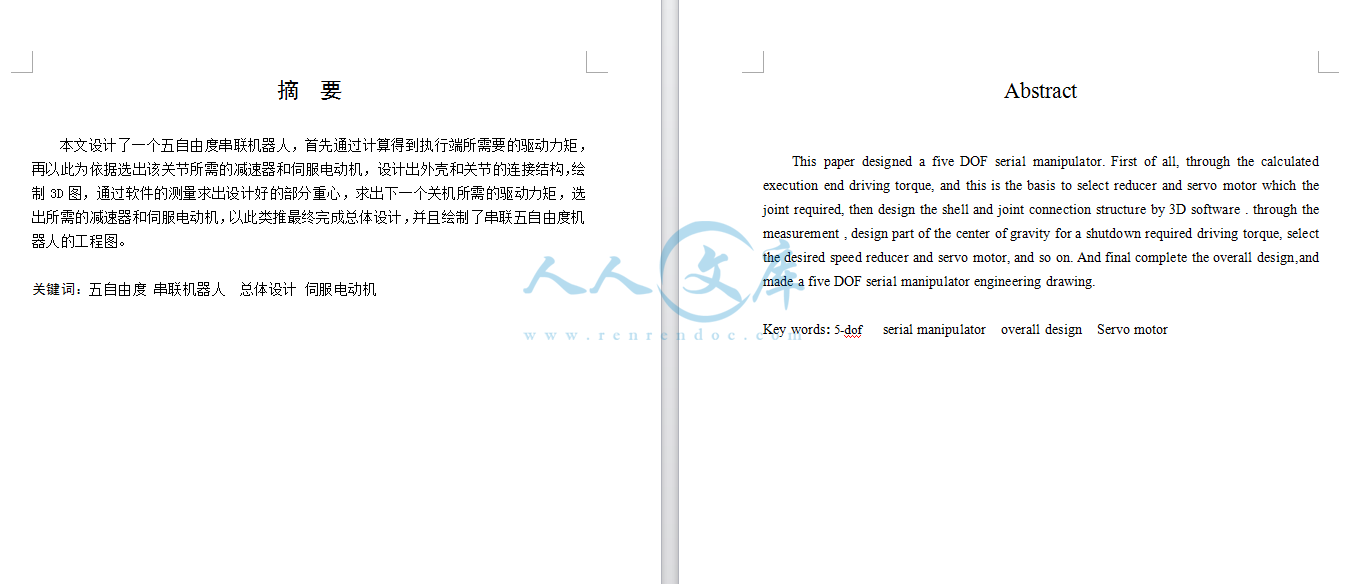
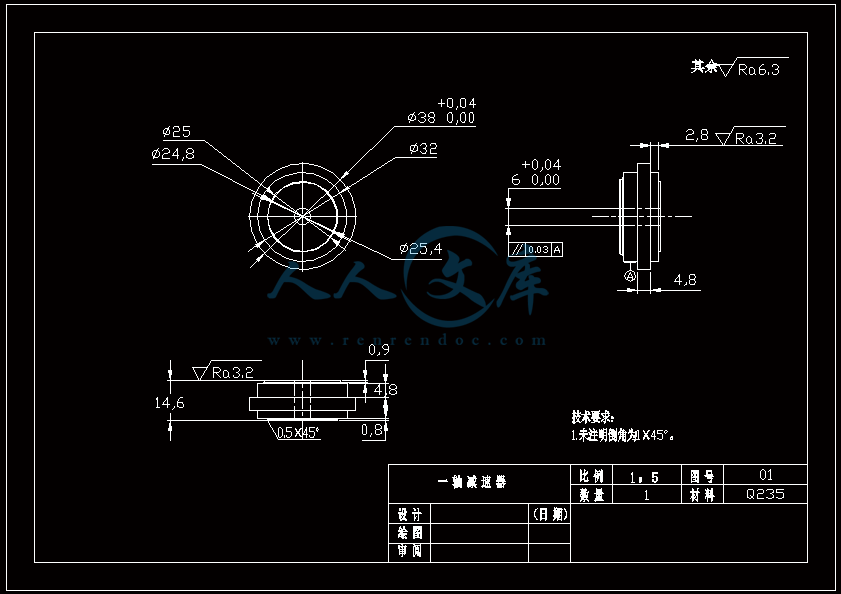
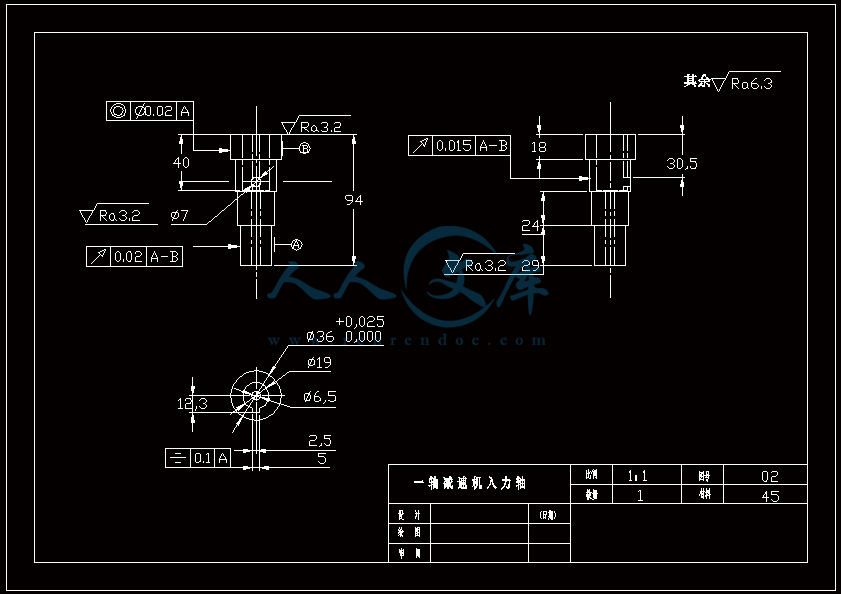
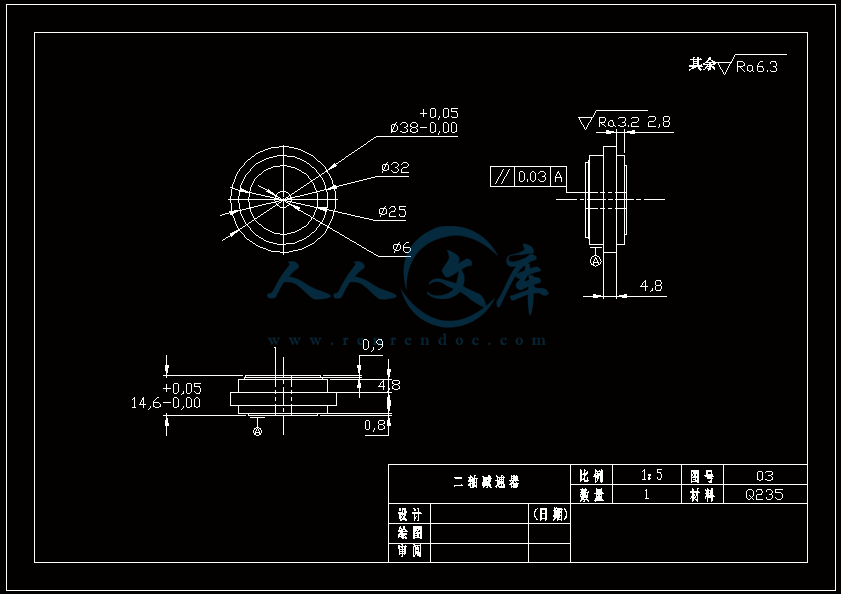


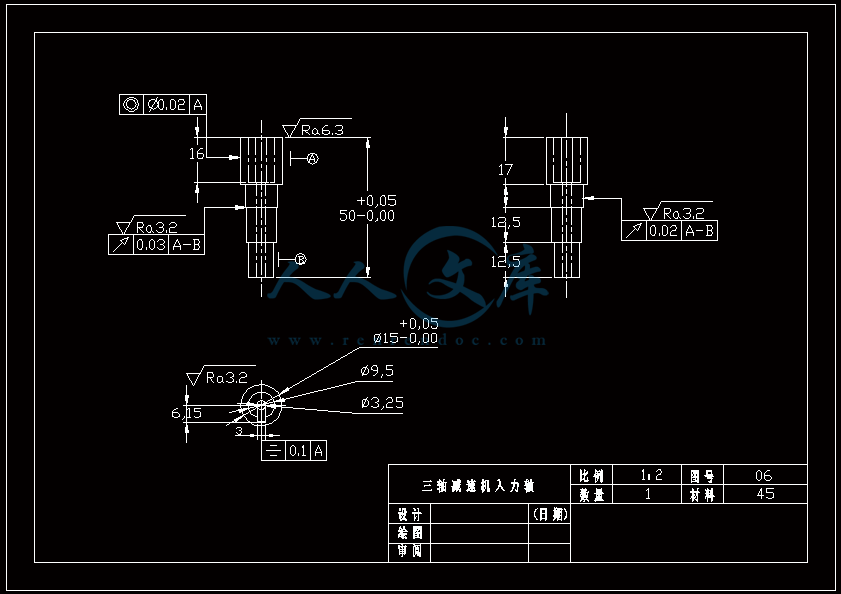

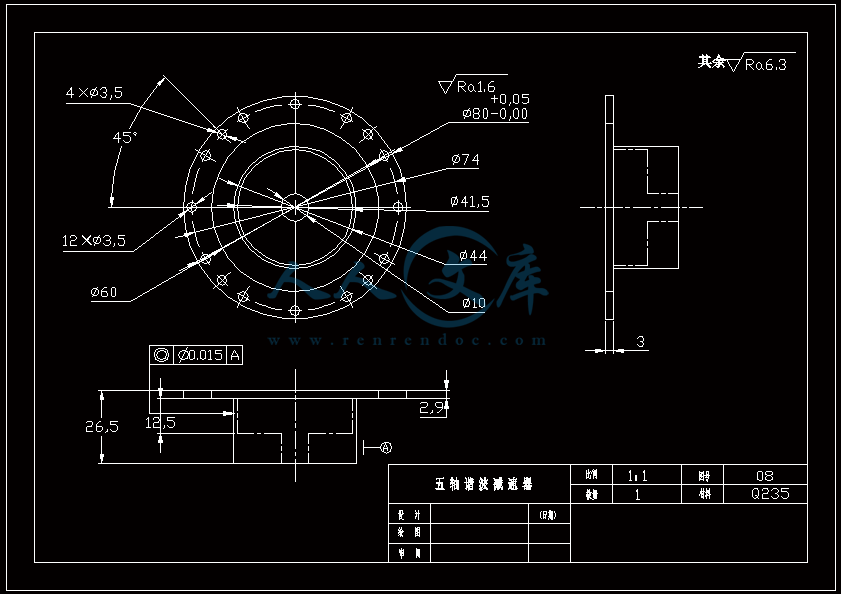
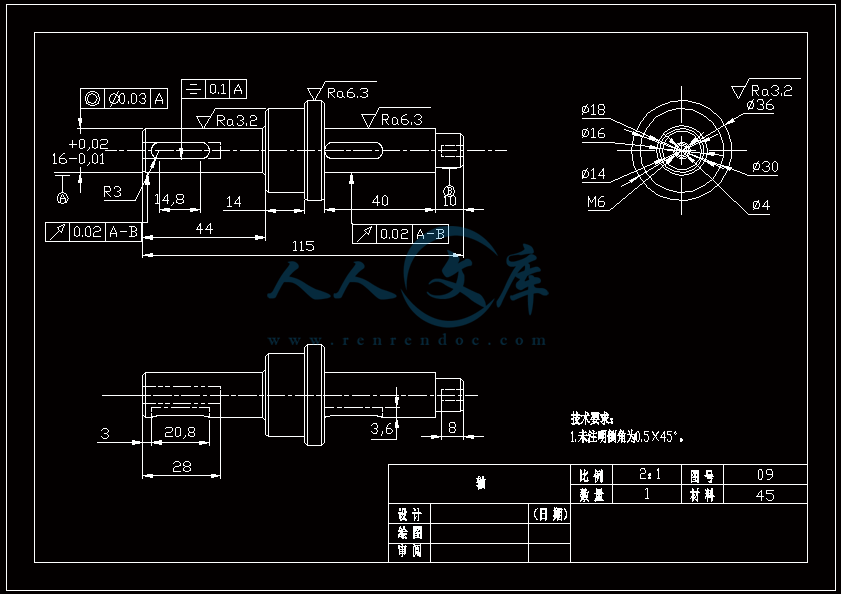




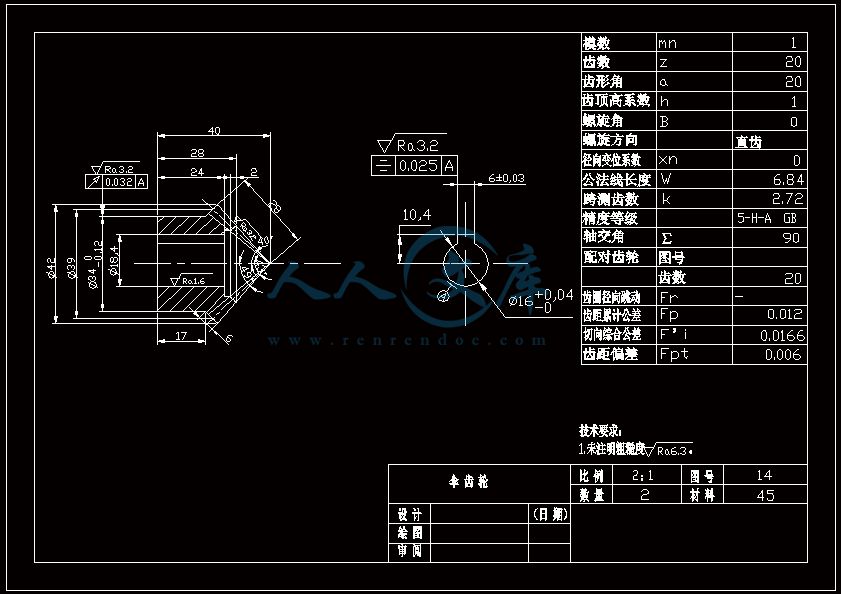
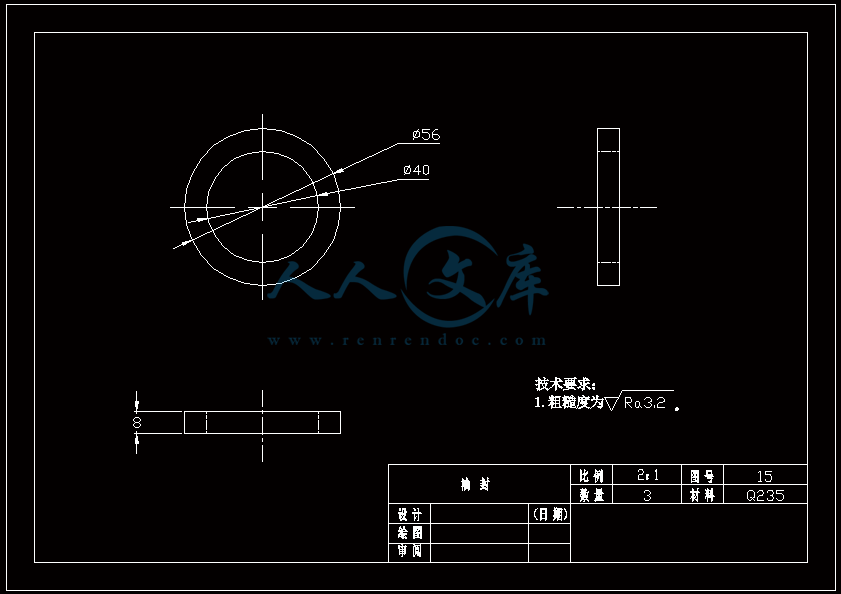
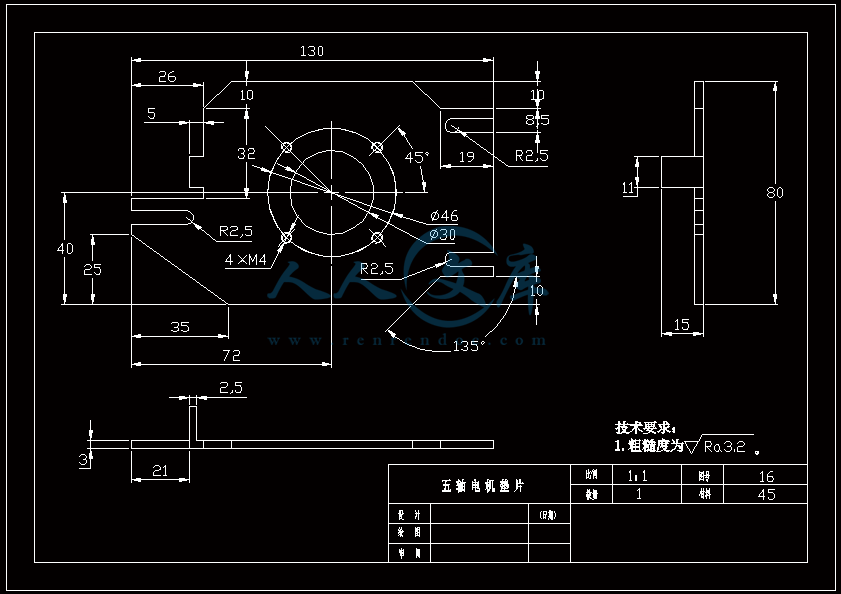
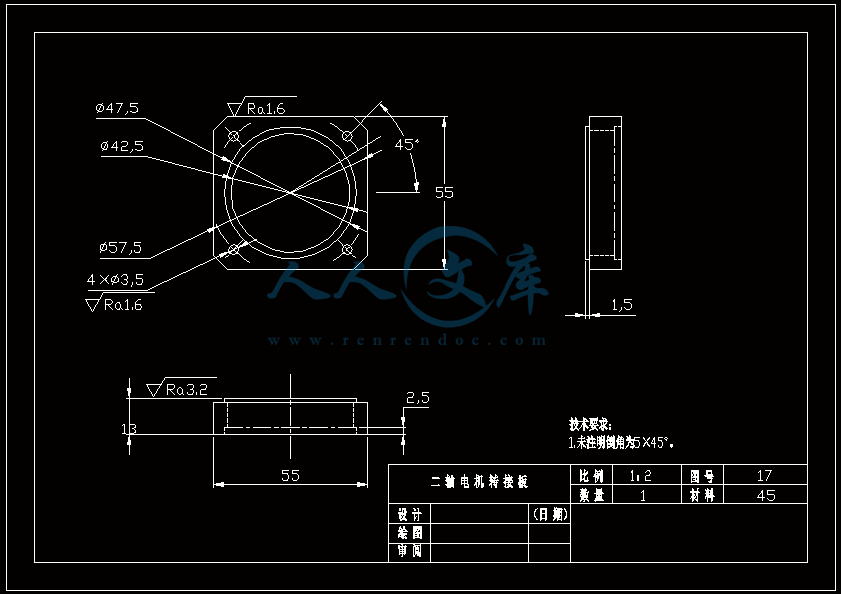






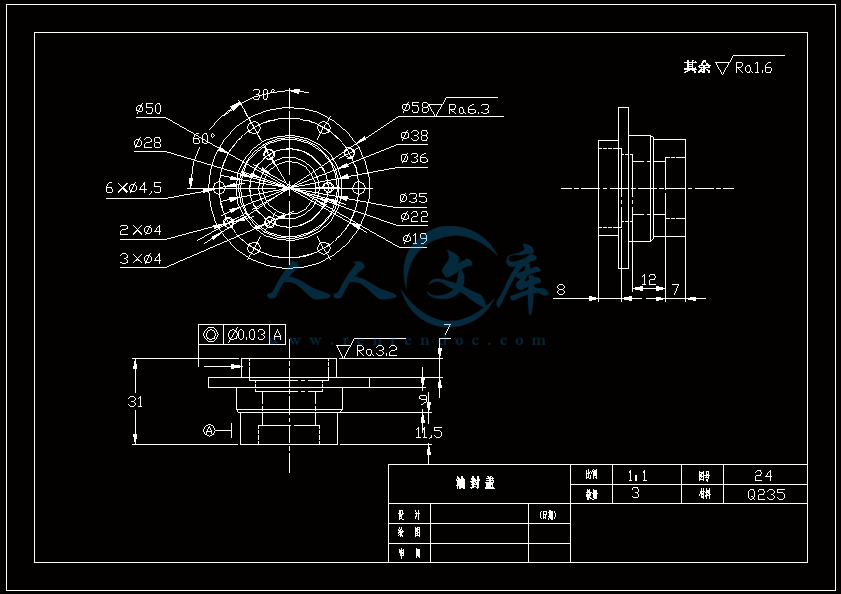

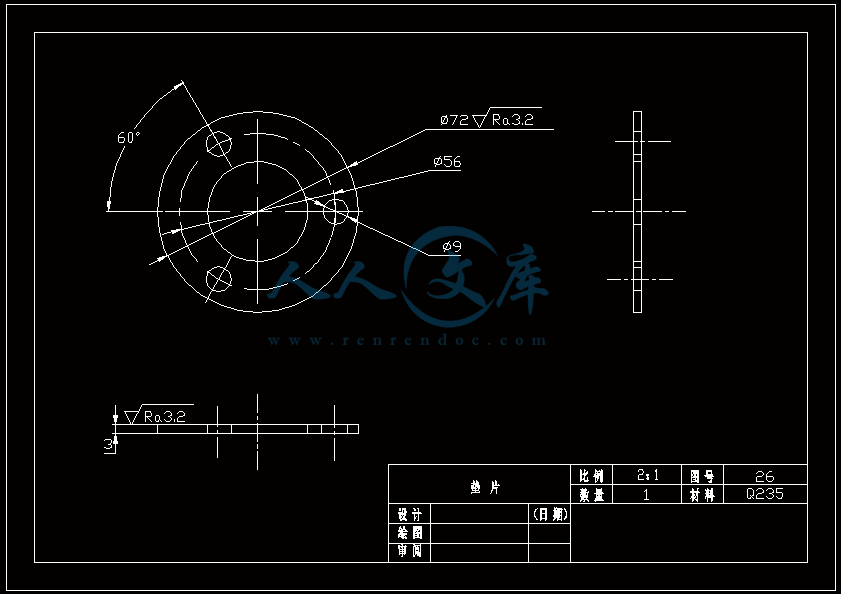
- 内容简介:
-
本科生毕业设计 (论文)外 文 翻 译原 文 标 题Planar Serial Manipulator Motion Synthesis sssssssssSynthesis 译 文 标 题平面串联机械手的运动合成作者所在系别作者所在专业作者所在班级作 者 姓 名作 者 学 号指导教师姓名指导教师职称完 成 时 间 译文标题平面串联机械手的运动合成原文标题 Planar Serial Manipulator Motion Synthesis作 者译 名国 籍原文出处Journal of Harbin Institute of Technology ( New Series) ,Vol22,No2,2015译文:摘要:本文论述了平面串联机器人手的运动合成问题,快速工作空间的解决方案和障碍物回避路径规划方法,它提出了一种一般形式的运动学反解,不依赖于机器人本身的自由度,通过确定目标向量方向的最大和最小工作空间边界和确定的工作空间极坐标形式的表达方法,最后,根据平面轨迹规划的障碍躲避问题,解决了安全避障的凹凸形式的运动学反解的方法,仿真结果验证了所提方法的可行性和通用性。 关键词:平面串联机器人 运动学反解 工作空间 轨迹规划 矢量投影1引言串联机械手的平面问题,这一特征点的机器人是可以在两维平面运动的最后一个系列。运动控制是很容易实现的,其中A型机械手每个接头大范围的运动。相当经典的串联机械手由安切洛蒂来配置。例如,PUMA机器人增加了第一个旋转接头和第三个关节的基础上的平面结构,满足要求的三维空间机器人的位置,通过正交布局,达到要求空间工作点的位置。先进的平面串联机械手已经应用在一些特殊情况下,如水型机器人臂。对于空间机器人的运动学分析,将机器人的配置分为多个平面的配置形式。可重构机器人通过一个模块可以自由组合的复杂机器人的配置和地址的运动学分析,动力学分析和轨迹规划问题。为了解决自动重构机器人运动学逆解、魏等人。1提出配置平面的概念。在这个概念中,一个三维的机器人配置被分解成一个二维平面结构,以简化运动学反解问题,实现自动和快速的解决方案的目标。一般情况下,分析的解决方法是很难获得多参数、非线性、强耦合的解决方案,并参与到6R机器人运动学反解的代数方程中2。人们用半解析方法和解决空间NR机器人运动学反解问题的一般方法。已经进行了一个运动分析与任何形式的平面结构,从而成为一个可重构机器人系列,是机器人运动分析的关键问题之一。本文以矢量投影法为研究重点,对平面串联机器人的运动学反解和工作空间的轨迹规划进行了研究。本研究的目的是获得一个简单的和快速的方法和一般的运动学反解求解的可重构机器人轨迹规划,并提供一个参考的空间形式的串联机械手。2自动运动学解2.1平面串联机器人平面串联机器人主要由旋转接头、平移关节和连杆。考虑到连杆不是一个单一的连接形式,当机器人运动模型建立与基本运动单元的旋转关节,运动的变换矩阵是是转动关节运动;H是相邻的旋转接头中心连接杆的长度,其值的变化时,它包括移动节点一般的平面机械手是串联的形式显示在图1结束点的姿态矩阵是:当图1总平面形状的串联机械手运动模型2.2平面串联机械臂的自动求解方法这种方法不包含相当大的平移关节在一个共同的平面串联机械手的构象,但符合空间位置要求或空间冗余任务,机器人关节的过度运动会降低整体控制过程中的性能和刚度特性。如图1所示,平面串联机械手的运动学反解可以分为两个部分,即姿势和位置的要求。具有冗余形式平面串联机器人(三自由度以上),他们的姿势的要求是第N1接头部分必须保证N接头运动范围的条件下。结束姿势要求可以通过最后一个旋转接头来实现的,其位置的要求可以通过组合第一N1接头实现。对于平面串联机器人的自由度小于或等于3,它的三个关节都需要满足的姿势岗位要求,它可以解析求解应用式(2)。我们利用向量投影法求解平面机器人的各种表单自动满足以下约束:在P是结束向量的范数;AI是矢量P用联合杠杆臂的投影之间的比例和关节臂。考虑向量投影的方向,AI表示如下:是关节臂和目标点矢量之间的夹角图2,P点目标点。如果联合N固定长度的HN,联合体育中心的空间位置是可以计算出来的。因此,整个计算是一个组合的前n1接头后,接头的N1配合中心联合N图中的结束,没有一个固定的长度,移动节点的存在,利用最短的长度。联合我的关节n + 1的杠杆臂之间是一个最大长度的状态,确保吉+ 1约长度最大,中心节点图n计算,这是初步jn。图2运动学求解过程自动计算被阐明如下:(1)在关节运动的情况下,最大限度的投影量。找到点(ji + 1)与+ 1与jn,如图所示,ji + 1与,ji + 1 jn相比;如果ji + 1 jnji + 1,自动计算;如果ji + 1 jnji + 1,进行下一步。(2)在关节运动的情况下,逆投影量的范围。找到最大点(Ji + 1)与+ 1与jn,如图所示。J+ 1与J+ 1 jn相比;如果J+ 1 jnJ,+ 1,自动计算,关节运动在允许范围的情况下,J+ 1 jn符合要求;否则,进行下一步。(3)+ 1关节调整到N1关节运动使J+ 1的长度是最短的。J+ 1与J+ 1 jn相比;如果j+ 1 jnJ+ 1,J+ 1的长度是根据位置的要求;如果J+ 1 jnJ+ 1,逆投影量最大值点J+ 1jn, + 1节自动计算。从第一关节开始,一个固定的周期可以满足要求,在机器人运动学逆解。3自动解算的工作区机器人的工作空间,可以显示机器人的工作范围,是评价机器人的重要指标,然而,平面机器人的工作空间与机器人的工作空间是不同的。组成关节的运动范围也不同。因此,我们获得的工作是复杂的,会形成一个复杂的区域,这是由三,如图3所示。这一特征使工作空间的解决方案很难获得。图3工作区采用多域为解决机器人工作空间主要包括分析、图形的方法和数值方法4。在分析方法中,工作空间的边界是由多个信封决定。然而,这种方法是复杂的,普遍应用于机器人的关节。图解法求解边界工作空间,我们可以得到各种相交的线或相交的表面。这种方法是有效的但也是由自由度的数目有限,当节点的数量是很大的,我们应该通过组6处理。数值计算方法是基于极值理论和优化方法来计算机器人工作空间的边界曲面的特征点,这是用来构成边界曲线和形状的边界表面。代表结果的搜索方法,迭代法和蒙特卡罗79。为了计算串联机器人定姿态工作空间,提出了一种基于二进制逼近原理的快速搜索方法基于上述方法,每一种方法的目的是利用该区域的自动求解工作区的边界的确定,如图3所示,以方便快速评价工作区的平面串联机械手和快速匹配的配置平面的可重构机器人,我们通常会给平面矢量来解决这个位置,机器人可以实现对矢量。在本文中,我们使用了一种方法的基础上的工作空间矢量的空间矢量的情况下,在这个向量的工作空间边界迅速确定。4轨迹规划方法轨迹规划的目标是规划理想的任务和关节空间的运动轨迹,使机器人运动速度快,精度高,运动点效率高,轨迹跟踪精度高,满足路径、障碍和运动学约束。避障是轨迹规划的一个关键问题。通常采用的方法是规划机器人空间轨迹的终点会议空间避障要求,使用机器人的运动学反解求解各空间点的每个关节的价值。调整速度和平移关节加速度使机器人能达到更好的运动效果。实现避障任务更好,许多研究已经简化了壁垒概述由包络圆。参考文献12,阻挡接近一点,以最小的点与杠杆臂之间的距离作为避障的基础,该方法扩展了障碍物的空间,减少了实际工作环境中的实际机器人的工作空间机器人的可操作性。使用新的双向快速探索随机树算法对复杂空间躲避障碍物的轨迹规划。这些算法不需要运动学反解计算方法,但我们可以通过扩展树方法实现空间避障任务。perumaal等人提出一种自动轨迹规划确定平滑,为中存在的障碍,一个五自由度机械手抓放操作的最小时间和无碰撞轨迹。该计划是能够处理的轨迹与不通过点和痕迹的光滑,无碰撞,近段时间最优轨迹,不仅为机器人的端部执行器,但也为它的链接确保无碰撞轨迹。capisani等人。提出一个简单而有效的路径规划策略,目标是代表机器人的配置空间的障碍,表示允许获得一个有效的和准确的轨迹规划和跟踪,以及一个专用的碰撞检测规则的机器人与障碍物之间。第2节描述机器人运动学求解方法。当空间障碍存在,其空间轨迹规划。干扰与障碍的发生,如图4所示。图4平面障碍配置运动反解回避问题我们继续使用2节的仿真实例,其中机器人从初始点移动到目标点,图8中的区域1由实际障碍形成的,考虑机器人的尺寸和安全距离,我们展开1区的距离,形成安全的避障区2,根据运动学反解在轨迹规划过程中,机器人的结构形式表现出明显的干扰,从而平衡运动学反解的自动解和避障问题。5结论1)利用矢量投影法和关节约束,求解平面串联机械臂的运动学问题。仿真结果表明,该方法避免了传统的分析方法,它依赖于机器人的配置和自由度的形式,以及解决速度和精度的问题时,使用数值方法,这种方法也实用和通用。2)在矢量方向上提出一个工作范围,作为平面机器人的工作空间表达式。此方法使用一个搜索的方法来解决工作区范围迅速的方向上的设置矢量角。这种方法也自动和快速。此外,该方法是将三维空间机器人分解为二维平面机器人的基础。3)通过对平面串联机械手的运动学反解求解方法的改进,实现了轨迹规划平面机器人工作空间的障碍。仿真结果表明,该方法是通用的和实际的障碍与凸形式。原文:Planar Serial Manipulator Motion SynthesisYanhui Wei* ,Han Han,Zepeng Wang,Xin Liu and Guangchun Li( College of Automation,Harbin Engineering University,Harbin 150001,China)Abstract: This paper deals with the universal serial manipulator on the inverse kinematics problem of planetype,the fast working space solution method,and the obstacle avoidance path planning methodWith the vectorprojection as the main constraint condition of the target,it proposes a general form of the inverse kinematics solution which does not depend on the robot configuration of freedom degreeBy identifying the target vectordirection maximum and minimum workspace boundary and determining the destination vector by thick search on the workspace boundary method,an expressing method of the polar coordinate form of work space is then introduced Finally,according to the form of plane trajectory planning for obstacle avoidance problem,the method of solving the inverse kinematics solution of the concave and convex forms of the safe obstacle avoidance area is improvedThe simulation results verify that the proposed method has feasibility and generalityKeywords: planar serial manipulators; inverse kinematics; workspace; trajectory planning; vector projection1 IntroductionPlanar serial manipulators refer to the feature in which a robot can point in a two-dimensional plane movement at the end of a series Planar serial robot motion control is easy to implement,in which a robot forms a single,large range of movement of each joint Considerable classic serial robot configuration has evolved For example,PUMA robot increases the first rotary joints to the second and third joints based on planar configuration and satisfies the requirement of a three-dimensional space robot position by orthogonal layout to request the position of space operating point Planar serial manipulators have been advanced in some special circumstances,such as under water-type robot armFor the space robot kinematics analysis,the robot configuration can be divided into multiple planar configuration forms econfigurable robot through a module can free the combination of complex robot configuration and address the kinematics analysis, dynamics analysis,and trajectory planning problemsTo solve the inverse kinematics solution of an automatically reconfigurable robot, Wei et al1 proposed the concept of configuration plane In this concept, a three-dimensional robot configuration isdecomposed into a two-dimensional plane configuration to simplify the inverse kinematics problem and achieve the goal of an automatic and fast solution Generally,the analytic solutions are difficult to obtain due to the multi-parameters, nonlinearity and coupling of the solutions,and the algebra equations involved in the inverse kinematics of 6 serial manipulators2 Wei et al3 used a semi-analytic method and a generalmethod to solve the spatial n robot inverse kinematics problem A motion analysis has been conducted with any form of planar configuration,which becomes a reconfigurable robot series and is one of the key problems of the robot motion analysisIn this paper,the inverse kinematics of planar serial manipulators and the workspace and trajectory planning are studied,with the vector projection method as the focus This study aims to obtain a simple and fast method and a general inverse kinematics solution for the reconfigurable robot trajectory planning and to provide a reference for space in the form of serial manipulators2 Automatic Kinematics Solution2. 1 General Form of Planar Serial ManipulatorsPlanar serial manipulators are mainly composed of rotational joints,translational joint,and a connecting rodConsidering that the connecting rod is not in the form of a single connection,when a robot motion model is established,with the rotational joint of the basic movement unit,the motion transformation matrix iswhere is the rotational joint exercise; h is the length of the connecting rod of two adjacent rotational joint centers,whose value varies when it includes mobilejointsThe general form of planar serial manipulators is shown in Fig1 The end point of the pose matrix is: WhereFig 1 General form of the planar serial manipulator motion model22 Automatic Solving Method of Planar Serial ManipulatorThis method does not contain considerable ranslational joint in a common conformation of planar serial manipulator but meets the space position requirements or space redundant tasks The excessive movement of the robot joints will reduce the performance and stiffness characteristics in the overall controlling processAs shown in Fig 1,the inverse kinematics of planar serial manipulator can be divided into two parts, i e,the posture and position requirements For the planar serial robot with a redundant form ( more than three degrees of freedom) ,their posture requirements are under the conditions that the first n 1 joint part must guarantee the range of n jointsmotion The end posture requirements can be achieved through the last one rotating joints,and its location requirements can be implemented by combining the first n 1 joints For the planar serial robot whose degree of freedom is less than or equal to 3,its three joints all need to meet the posture and position requirements and it can be analytically solved using Eq ( 2) We use the vector projection method to solve the various forms of planar serial robot automatically,which satisfies the following constraints:where p is the norm of the end vector; ai is the ratio between the projection of ith joint lever arm on the vector p and the joint lever arm Considering thedirection of vector projection, ai is expressed as follows: where i is the angle between ith joint lever arm and the target point vectorIn Fig2,P point is the target point If the length hn of the joint n is fixed,the spatial location of the joints sports center can be calculated Therefore,the entire calculation is after a combination of the former N 1 joint,and the ends of the joint n 1 coincide with the center joint n in the figure Without a fixed length,mobile joints exist,which utilize the shortest length The joint I to the joint n + 1 between the lever arm is in a state of maximum length,ensuring that the length of ji+1 jn is maximum The center of the joints with the picture n is calculated,which is the tentative for jn Fig2 Kinematics solving processThe automatic calculation is elucidated as follows:1) In the case of joint movement i range,the projection quantity maximumPoint ( ji+1) of ji ji+1 is found in ji jn,as shown in Fig2 The length of ji+1 jn is compared with that of ji+1 jn; if ji+1 jn ji+1 jn,i + 1 joint automatic calculation is conducted; if ji+1 jn ji+1 jn,the next step is performed;2) In the case of joint movement i range,the inverse projection quantityMaximum point ( ji+1) of ji ji+1 is found in ji jn,as shown in Fig2 The length of ji+1 jn is compared with that of ji+1 jn ; if ji+1 jn ji+1 jn,the automaticcalculation is conducted at the end of I joint In the case of joint movement I range,ji+1 jn is found to meet the requirements; otherwise, the next step is performed; 3) I + 1 joint is adjusted to n 1 joint exercise to make the length of ji+1 jn be the shortest The length of ji+1 jn is compared with that of ji+1 jn ; if ji+1 jn ji+1 jn,the length of ji+1 jn is adjusted to meet the position requirements; if ji+1 jn ji+1 jn,the inverse projection quantity maximum point of ji ji+1 is found inji jn and I + 1 joint automatic calculation is conductedStarting from the first joint,a constant cycle can meet the requirements at the end of the robot kinematics inverse solutions3 Automatic Solution of the WorkspaceThe workspace of the robot,which can show the operating range that the robot can achieve, is an important indicator for evaluating robots However,the workspace of planar robot differs because the number of composition joint and the range of motion also differThus,the workspace we obtain is complex and will form a complex region, which is made of multidomains,as shown in Fig3 This feature makes the solution of the workspace difficult to obtainFig3 Workspace made of multi-domainsThe method for solving the robot workspace mainly includes analytical, graphical, and numerical methods4 In the analytical method,the boundary of workspace is determined by multiple envelopesHowever,this method is complicated and is generally applied to the robots with less than three joints5 The graphical method is used to solve the boundary of workspace We can obtain various intersecting lines or intersecting surfaces This method is effective but is also limited by the number of degrees of freedomWhen the number of joints is large,we should handle it by group6 The numerical method is based on extreme value theory and optimization methods to calculate the feature points on the boundary surfaces of robotsworkspace,which are used to constitute the boundary curves and form the boundary surface The representative results are the search method,iterative method,and Monte Carlo79 In order to compute the constant-orientation workspace of serial robots,a fast search method based on the binary approximating principle is proposed10 Based on the above methods,each method aims to utilize the area formed by the workspace The problem of automatically solving the workspace is the determination of the boundary of the workspace As shown in Fig3, to facilitate the rapid evaluationworkspace of planar serial manipulator and the fast matching configuration plane of reconfigurable robots,we usually give plane vector to solve the position that the robot can achieve on the vector In this paper,we use a method based on the workspace expression of planar serial manipulator in the polar form,ie,in the condition in which the space vector is known,the workspace boundaries on this vector angle is rapidly determined4 Trajectory Planning MethodThe objective of trajectory planning is to plan ideal task and joint space trajectories,make the robot motion fast,accurate and stable with high movement point efficiency and high trajectory tracking accuracy,and satisfy the path, obstacle, and kinematicsconstraints The obstacle avoidance is a key problem in the trajectory planning The usual approach used is planning the robot end-point space trajectory,meeting the space avoiding obstacle requirements,and using robot inverse kinematics to solve each joint value ateach space point Adjusting the speed and acceleration of the translational joint allows the robot to achieve better motion effects To achieve the obstacle avoidance task better,many studies have simplified the barriers outline by enveloping circle11 In ef 12 ,the barrier approximates a point and takes the minimum distance between the point and the lever arm as the basis of obstacle avoidance This method expands the obstacle space,reduces the actual robot working space in the actual working environment, and limits the robots workability Xie et al13 used new bidirectional rapidly exploring random tree algorithms for complex spatial obstacle avoidance trajectory planning These algorithms do not require the inverse kinematics calculation method,but we can achieve the spatialobstacle avoidance task by expanding the tree method Duguleana14 proposes a new approach for solving the problem of obstacle avoidance during manipulation tasks performed by redundant manipulators In which q-learning is used together with neural networks in order to plan and execute arm movements at each time instant Perumaal et al15 proposed an automated trajectory planner to determine a smooth,minimumtime and collision-free trajectory for the pick-and-place operations of a 5-DOF robotic manipulator in the presence of an obstacle The proposed planner is ableto handle the trajectory with and without via-point and traces the smooth, collision-free, near-time-optimal trajectory The collision-free trajectory is ensured not only for the robots end-effector but also for its links Capisani et al16 proposed a simple but effective path planning strategy The goal is to represent the obstacles in the robot configuration space The representation allows obtaining an efficient and accurate trajectory planning and tracking And a dedicated collision checking rule between the manipulator and obstacles is also proposed Section 2 describes the method for solving the robot kinematics When space obstacles exist,their spatial trajectory is planned Interference will occur with the obstacle,as shown in Fig4Fig.4 Planar obstacle configuration inverse movement solving the avoidance problemWe continue to use the simulation exampl
- 温馨提示:
1: 本站所有资源如无特殊说明,都需要本地电脑安装OFFICE2007和PDF阅读器。图纸软件为CAD,CAXA,PROE,UG,SolidWorks等.压缩文件请下载最新的WinRAR软件解压。
2: 本站的文档不包含任何第三方提供的附件图纸等,如果需要附件,请联系上传者。文件的所有权益归上传用户所有。
3.本站RAR压缩包中若带图纸,网页内容里面会有图纸预览,若没有图纸预览就没有图纸。
4. 未经权益所有人同意不得将文件中的内容挪作商业或盈利用途。
5. 人人文库网仅提供信息存储空间,仅对用户上传内容的表现方式做保护处理,对用户上传分享的文档内容本身不做任何修改或编辑,并不能对任何下载内容负责。
6. 下载文件中如有侵权或不适当内容,请与我们联系,我们立即纠正。
7. 本站不保证下载资源的准确性、安全性和完整性, 同时也不承担用户因使用这些下载资源对自己和他人造成任何形式的伤害或损失。

人人文库网所有资源均是用户自行上传分享,仅供网友学习交流,未经上传用户书面授权,请勿作他用。
 川公网安备: 51019002004831号
川公网安备: 51019002004831号